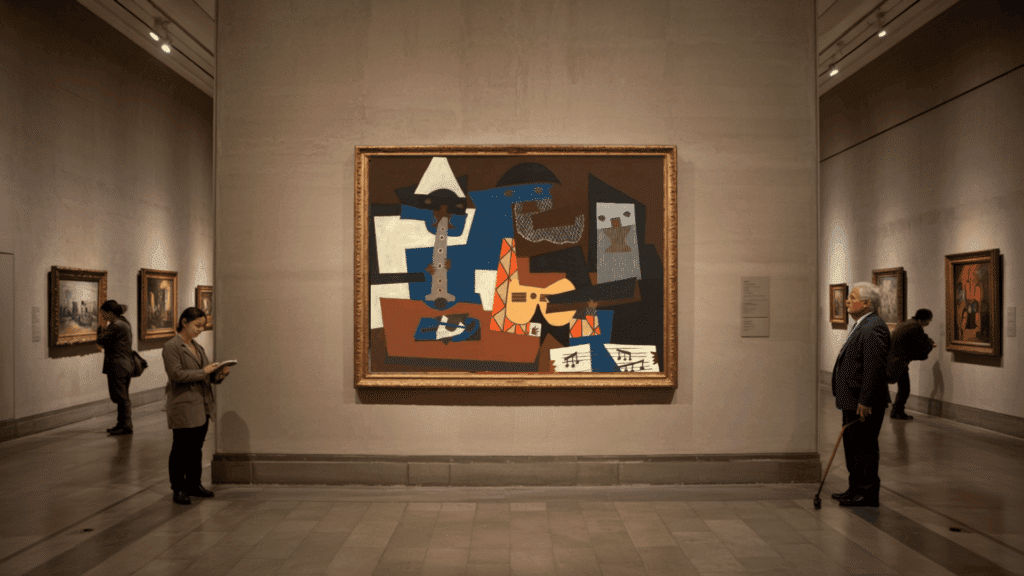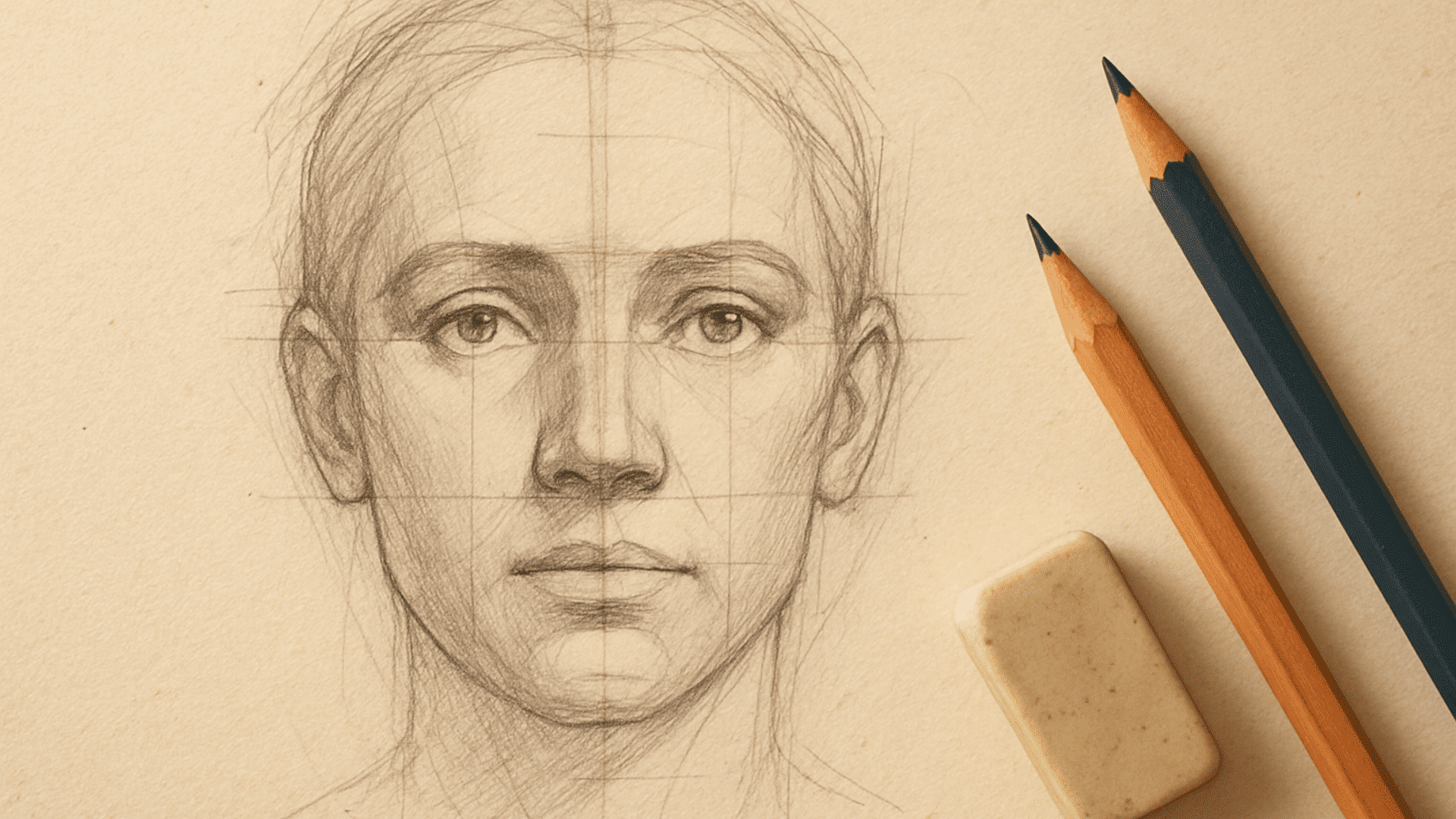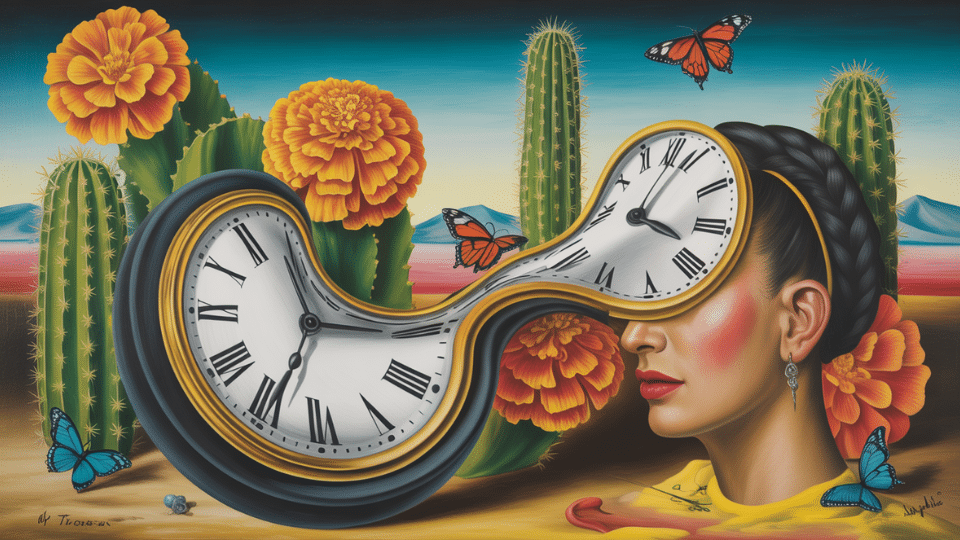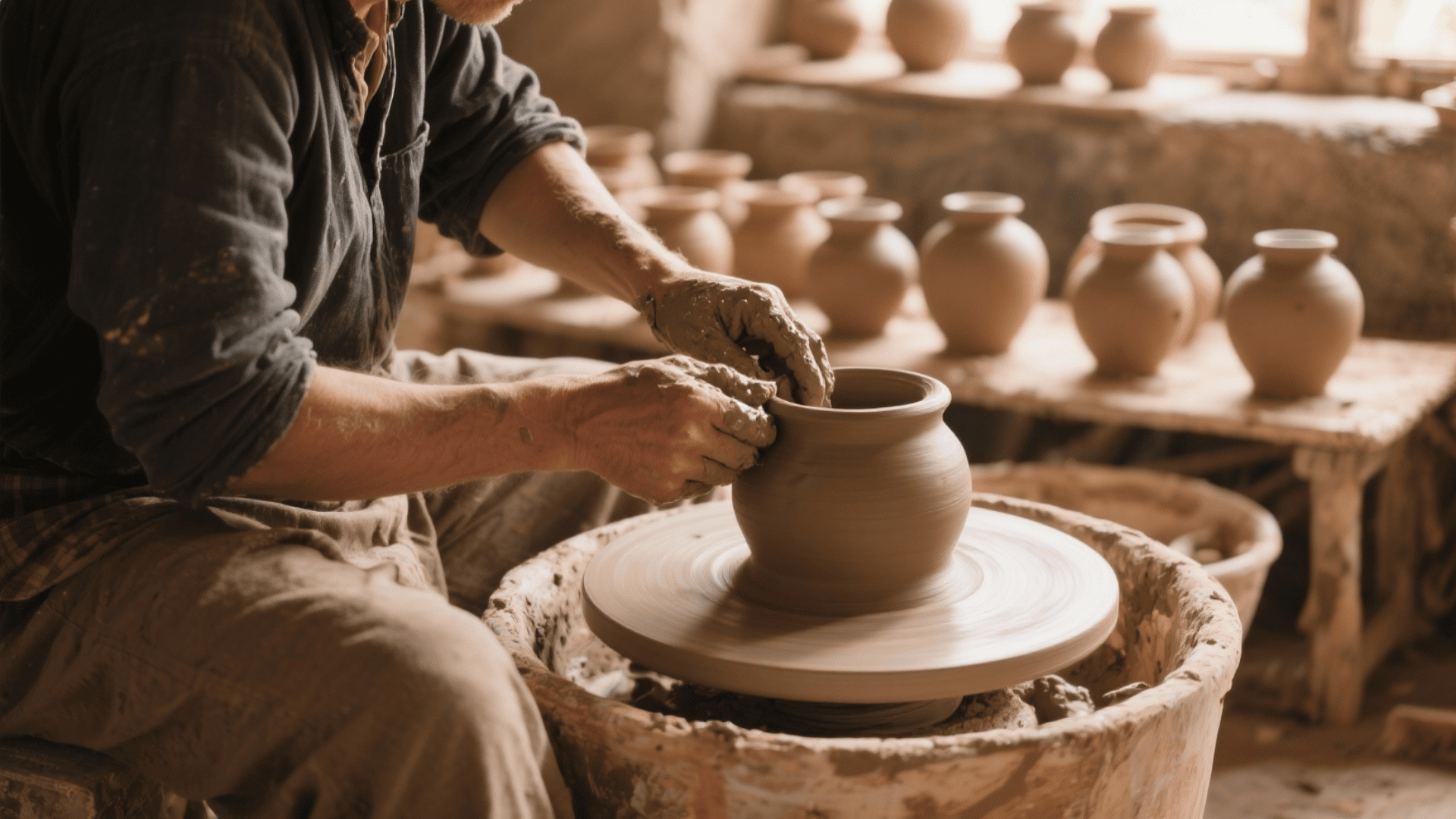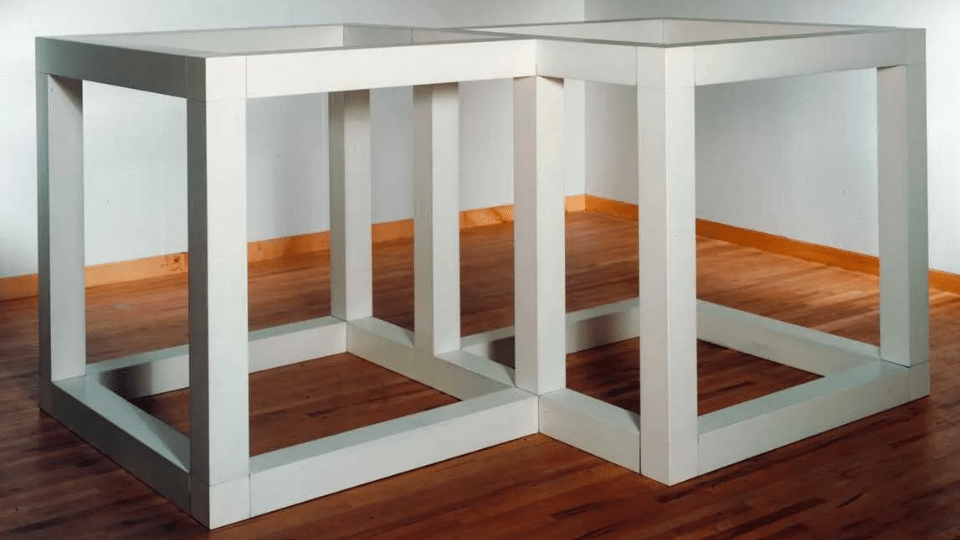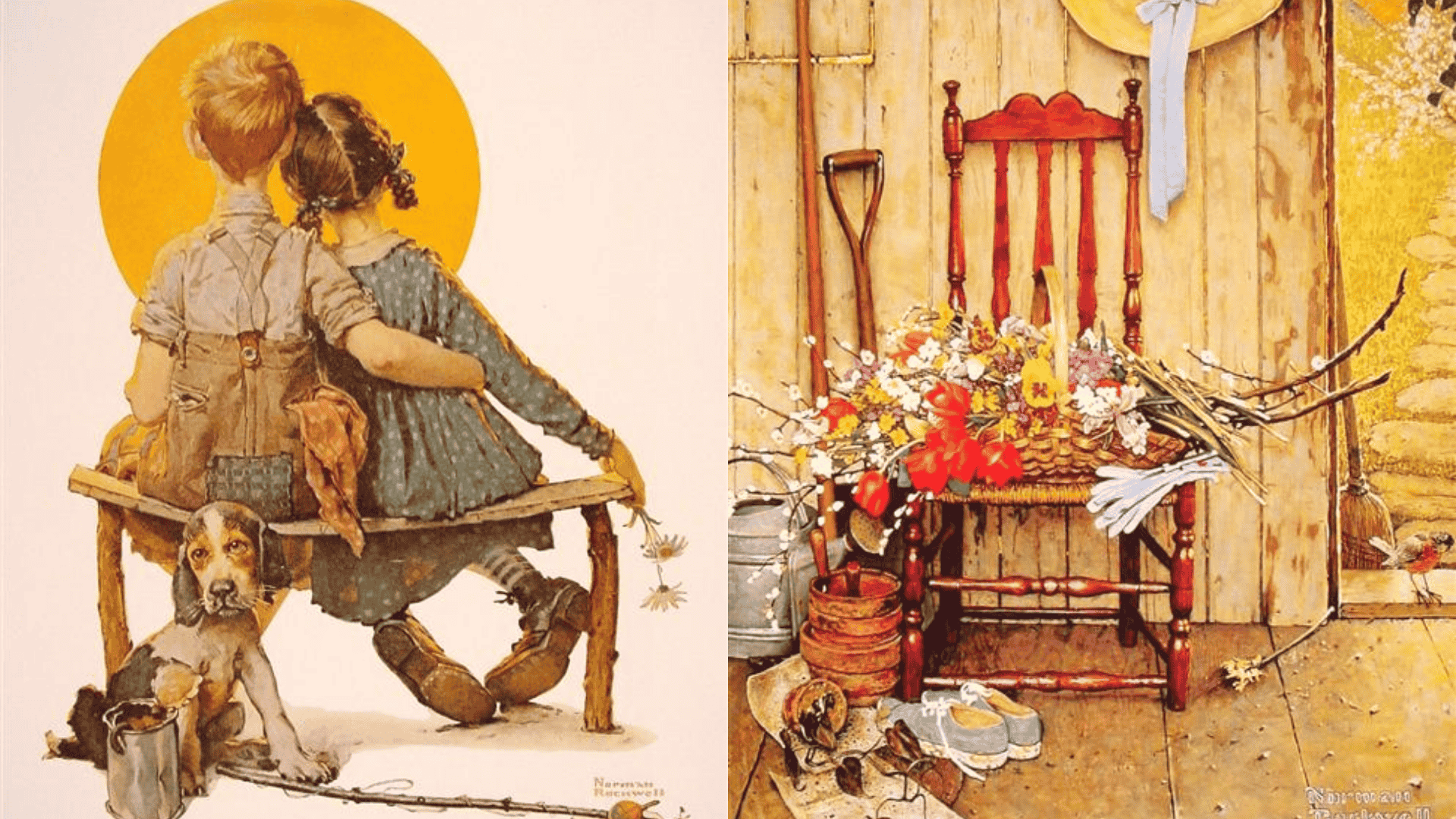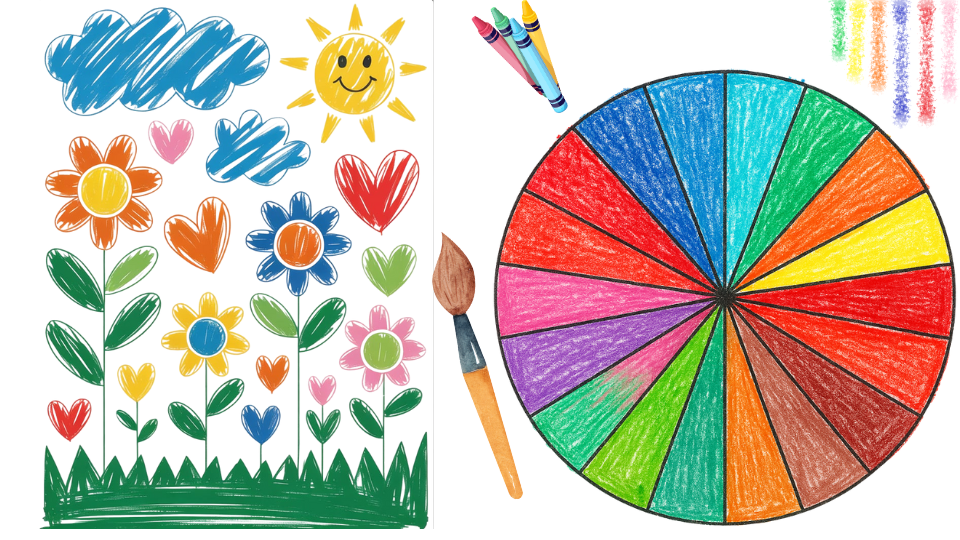Have you ever looked at a person’s face from the front and side at the same time? That sounds impossible, right? Well, Cubist artists figured out how to do exactly that on canvas!
Cubism shattered reality into pieces, revealing that every object has multiple perspectives, and art can convey them all at once.
Picture walking around a subject while someone takes photos from every angle, then combining all those shots into one amazing image.
Get ready to explore the world of famous Cubism paintings, where reality is changed into a beautiful puzzle of shapes, colors, and perspectives!
The Birth of Cubism
Cubism completely changed how artists created art in the early 1900s. Before Cubism, painters attempted to create realistic pictures that resembled real life. Pablo Picasso and Georges Braque threw out these old rules in 1907.
Instead of realistic images, artists used cubes, triangles, and other shapes to show objects from many angles at once, creating bold, puzzle-like paintings unlike traditional ones.
- Analytic Cubism (1908-1912): It broke objects into tiny pieces using mostly brown and gray colors.
- Synthetic Cubism (1912-1919): It reconstructed objects using brighter colors and actual materials, such as newspaper.
This revolutionary approach inspired countless artists and changed art forever, proving that paintings didn’t need to look realistic to be meaningful.
Meet the Pioneering Cubist Artists
Cubism emerged from visionary artists who broke tradition, pioneering a revolutionary style that changed the course of modern art
| ARTIST | CONTRIBUTION | NOTABLE WORKS |
|---|---|---|
| Pablo Picasso | Co-founder of Cubism, created the first Cubist painting | Les Demoiselles d’Avignon (1907) |
| Georges Braque | Co-developed Cubism with Picasso and pioneered collage | Violin and Candlestick (1910) |
| Juan Gris | Added mathematical precision to Cubism | Portrait of Pablo Picasso (1912) |
| Fernand Léger | Created the “tubular” style of Cubism | The City (1919) |
These four artists revolutionized art by using bold geometric forms and multiple perspectives, leaving a lasting influence on creators and designers worldwide.
Early Famous Cubism Paintings (1907-1912)
Early Cubism, pioneered by Picasso and Braque, revolutionized painting by breaking traditions and introducing geometric fragmentation with multiple perspectives.
1. Les Demoiselles d’Avignon (1907): Pablo Picasso
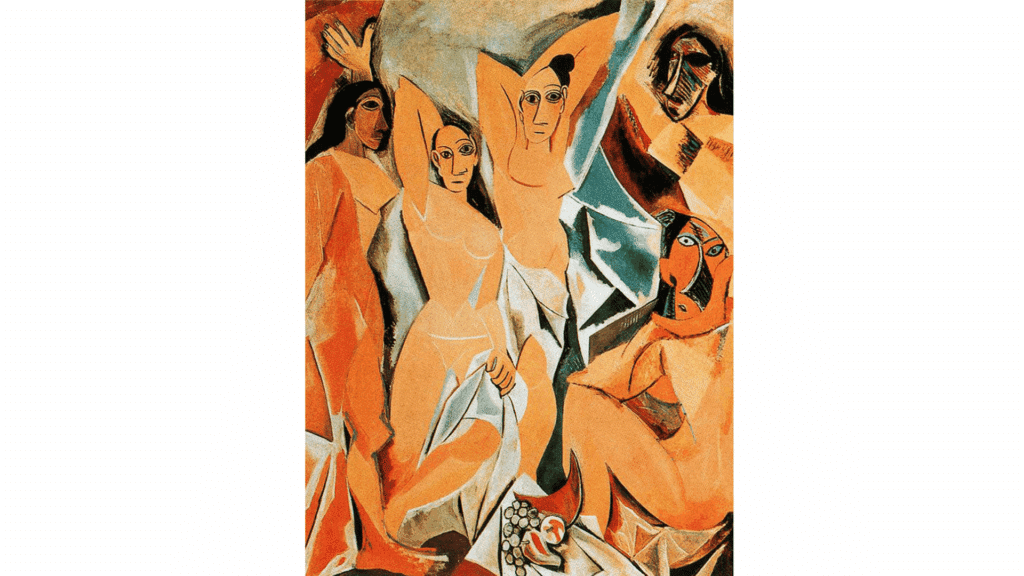
Source: ArtArchive
Picasso’s Les Demoiselles d’Avignon employed angular forms and mask-like faces, inspired by African art, marking the first true Cubist work and reshaping the course of art history.
2. Houses at L’Estaque (1908): Georges Braque
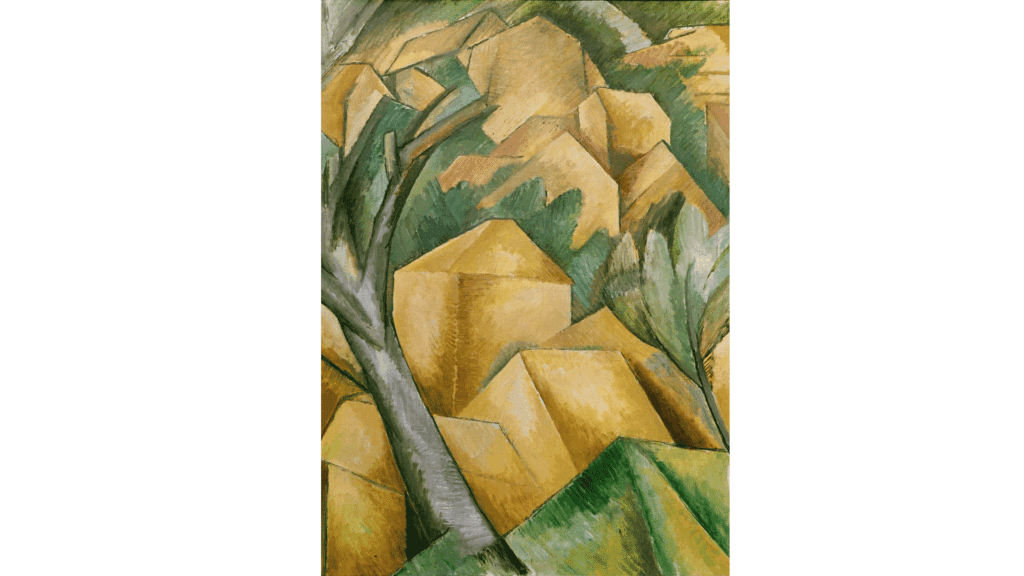
Source: Wikipedia
Braque painted French countryside houses with simple shapes, such as cubes and rectangles, making the buildings appear block-like. Art critic Louis Vauxcelles called it ‘cubes,’ naming Cubism.
3. Portrait of Ambroise Vollard (1910): Pablo Picasso
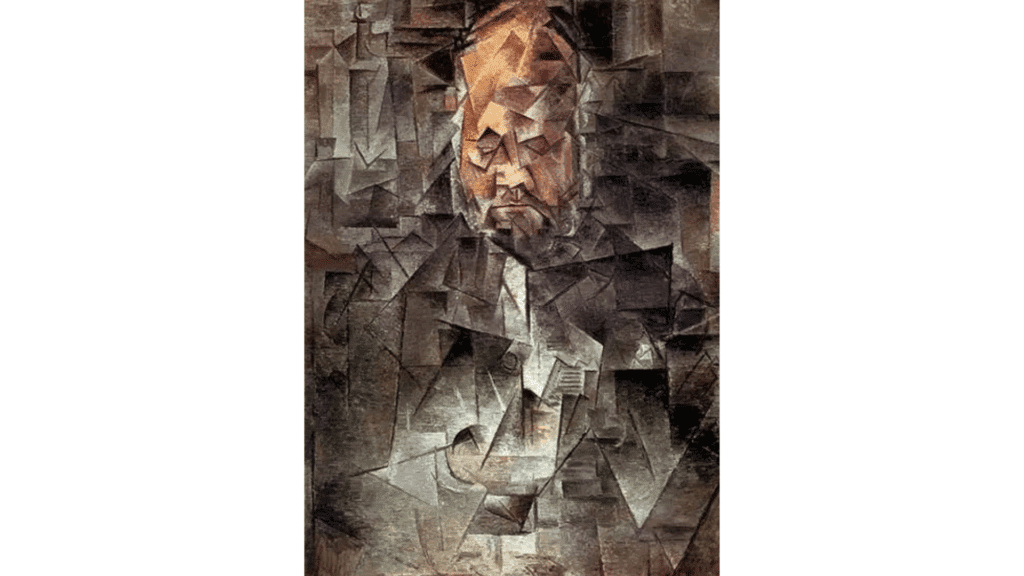
Source: WikiArt
Picasso painted Vollard by breaking his face and body into tiny geometric pieces, creating a puzzle of brown and gray shapes. The barely recognizable portrait shows how Cubists prioritized form over realism.
4. The Portuguese (1911): Georges Braque
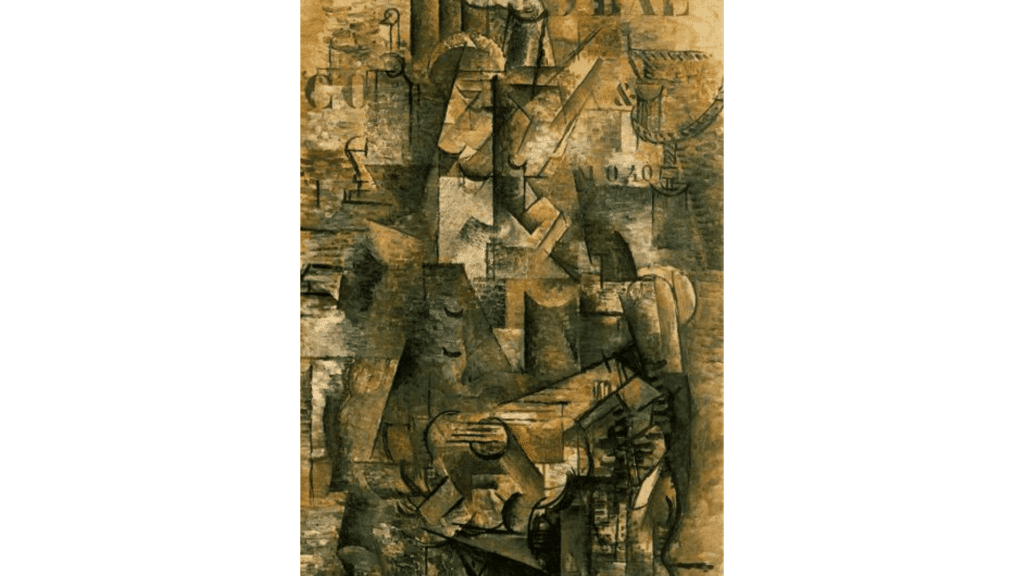
Source: WikiArt
This painting depicts a fragmented guitar player with geometric shapes. Braque used mainly brown, gray, and beige, adding stenciled letters and numbers, blending real and painted elements. This technique was crucial in Synthetic Cubism.
5. Ma Jolie (1911-1912): Pablo Picasso

Source: Pablo Picasso
“Ma Jolie” means “My Pretty One” in French. Picasso depicted his girlfriend with overlapping geometric shapes, with the words “Ma Jolie” at the bottom.
This work illustrates how Cubists combined text with their fragmented art images.
6. Violin and Candlestick (1910): Georges Braque
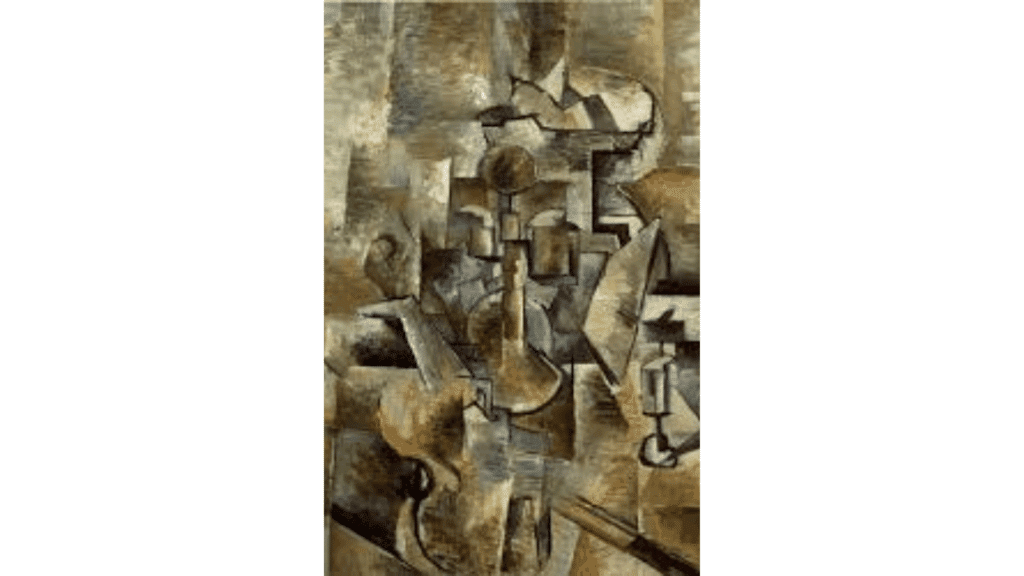
Source: WikiArt
Braque painted everyday objects by breaking them into geometric shapes and showing multiple viewpoints. The violin and candlestick are hardly recognizable.
This painting exemplifies Analytic Cubism’s focus on analyzing and fragmenting forms into basic shapes.
7. Daniel-Henry Kahnweiler (1910): Pablo Picasso
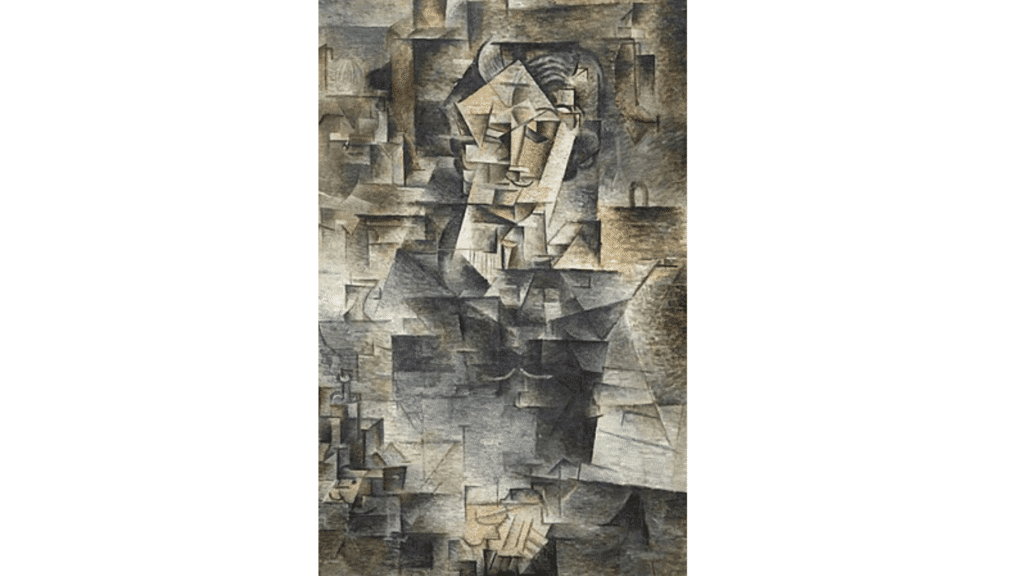
Source: Wikipedia
Picasso painted a portrait of art dealer Kahnweiler in his Cubist style, with his face and body broken into intersecting planes and geometric fragments.
Using mostly neutral colors, the painting reflects early Cubism’s analytical approach to breaking down visual reality.
These seven masterpieces laid the foundation of Cubism and showed that art didn’t need to copy reality exactly. They paved the way for many innovations in 20th-century art.
Analytic Famous Cubism Paintings (1909-1912)
In Analytic Cubism, Picasso, Braque, and peers deconstructed reality into geometric fragments and planes, using muted tones to shape a bold new vision
8. Girl with a Mandolin (1910): Pablo Picasso
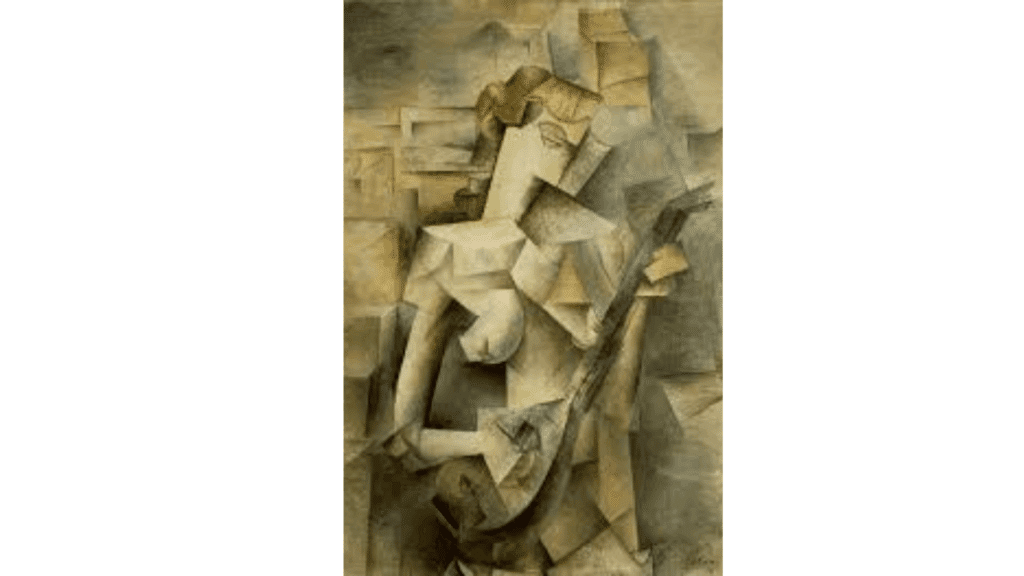
Source: Pablo Picasso
Picasso painted this young woman holding a mandolin by fragmenting her body into geometric shapes and overlapping planes.
The figure seems to dissolve into angular pieces while remaining recognizable. This painting shows how Analytic Cubists studied subjects from multiple angles simultaneously, creating complex visual puzzles.
9. The Weeping Woman (1937): Pablo Picasso

Source: Wikipedia
This powerful portrait shows a crying woman’s face broken into sharp, angular fragments. Picasso used bright colors and geometric shapes to express intense emotion and pain.
The fragmented tears and distorted features demonstrate how Cubist techniques could convey deep feelings through geometric abstraction and multiple perspectives.
10. Violin and Palette (1909): Georges Braque
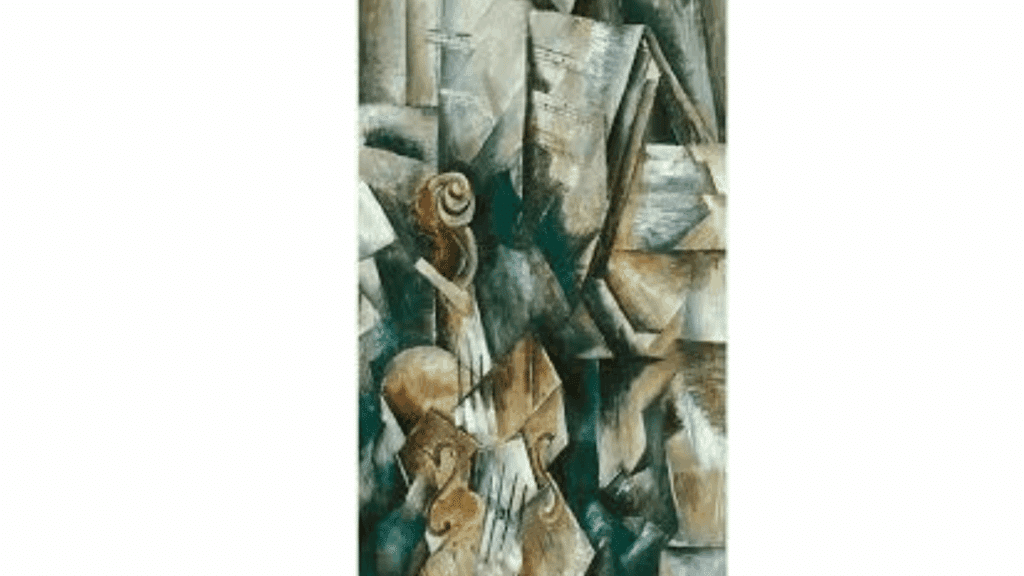
Source: WikiArt
Braque painted his artist’s palette and a violin using overlapping geometric planes in brown and gray tones. The objects blend together, making it hard to distinguish where one ends and another begins.
This work shows Analytic Cubism’s focus on breaking down familiar objects into basic geometric components.
11. Portrait of Wilhelm Uhde (1910): Pablo Picasso

Source:WikiArt
Picasso painted the German art collector by fragmenting his face and body into intersecting geometric planes. The portrait primarily features neutral colors, typical of Analytic Cubism.
Uhde appears to be constructed from angular building blocks, showing how Cubists reimagined human forms as geometric structures.
12. The Mandolin Player (1911) : Georges Braque
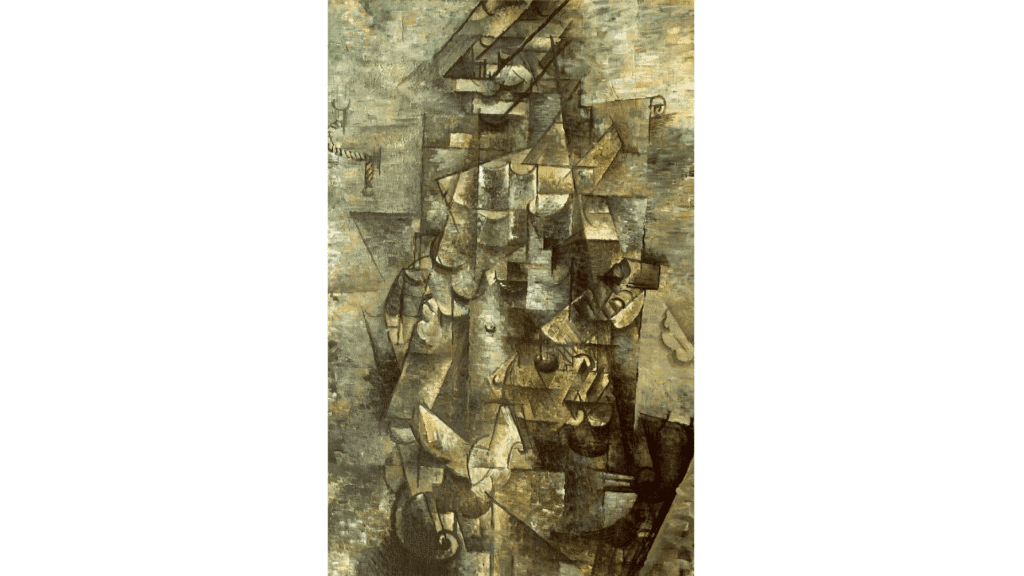
Source: ArtArchive
This painting shows a musician broken into overlapping geometric fragments and planes. Braque used subtle brown and gray colors to create depth through geometric shapes rather than traditional shading.
The mandolin and player merge together, demonstrating Analytic Cubism’s approach to deconstructing visual reality.
13. Still Life with Bottle and Glasses (1912): Juan Gris
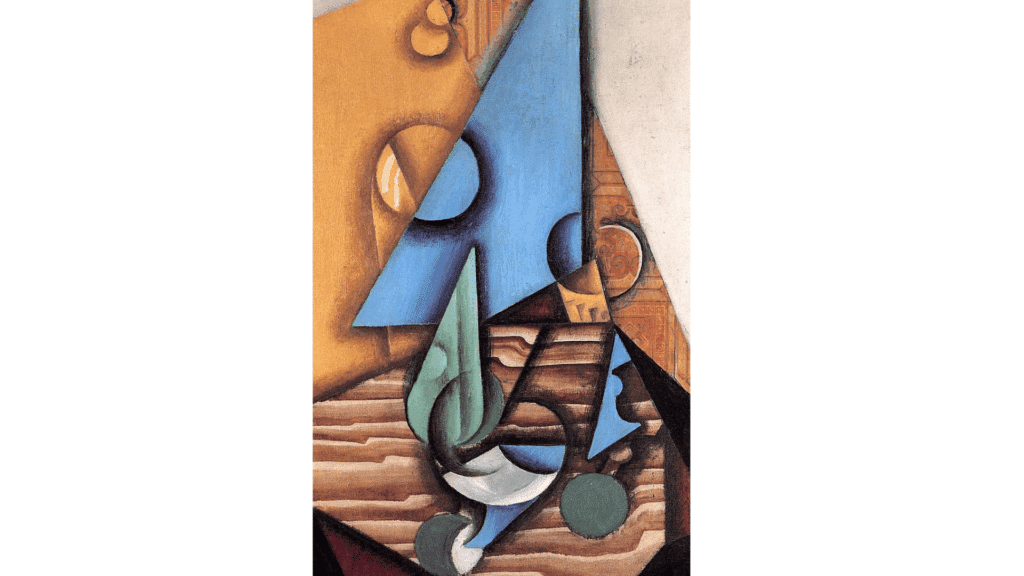
Source: ArtArchive
Gris painted everyday objects with precise geometric shapes and math, more structured than Picasso or Braque.
The bottle and glasses are recognizable despite being broken into fragments, highlighting Gris’s unique role in Analytic Cubism.
14. Woman with Pears (1909): Pablo Picasso
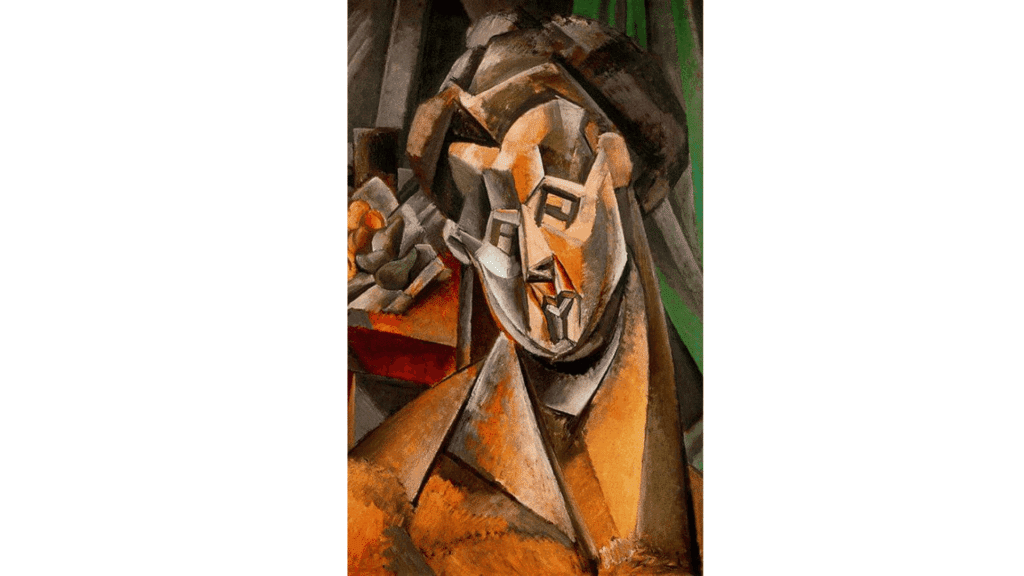
Source: Pablo Picasso
Picasso painted this female figure holding pears by breaking the subject and objects into angular, overlapping planes.
The woman’s body dissolves into geometric shapes, retaining its essential form. This early Analytic work shows Picasso’s method of fragmenting and reconstructing visual reality through geometry.
These Analytic Cubist masterpieces demonstrate how artists deconstructed reality while retaining recognizable subjects. They laid the foundation that influenced modern art for generations.
Synthetic Famous Cubism Paintings & Later Works (1912-1937)
Synthetic Cubism rebuilt objects with bold colors, collage, and real materials, shifting from deconstruction to inventive new artistic realities
15. Still Life with Bottle of Rum (1911): Pablo Picasso
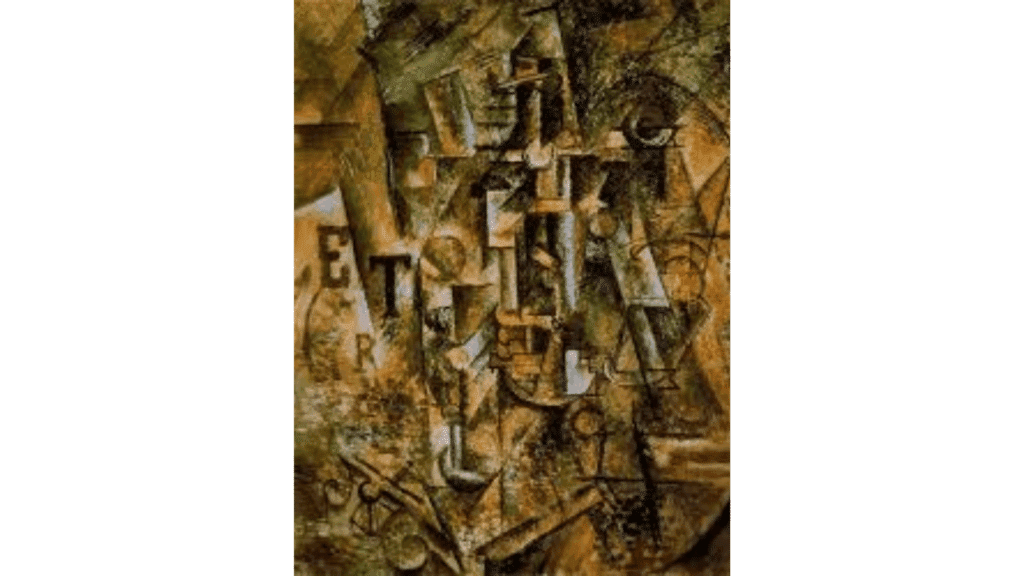
Source: WikiArt
This early Synthetic Cubism work shows overlapping planes of bottles, glasses, and letters. Picasso introduced brighter colors and simpler shapes, moving away from the muted tones of Analytic Cubism.
16. Fruit Dish and Glass (1912): Georges Braque
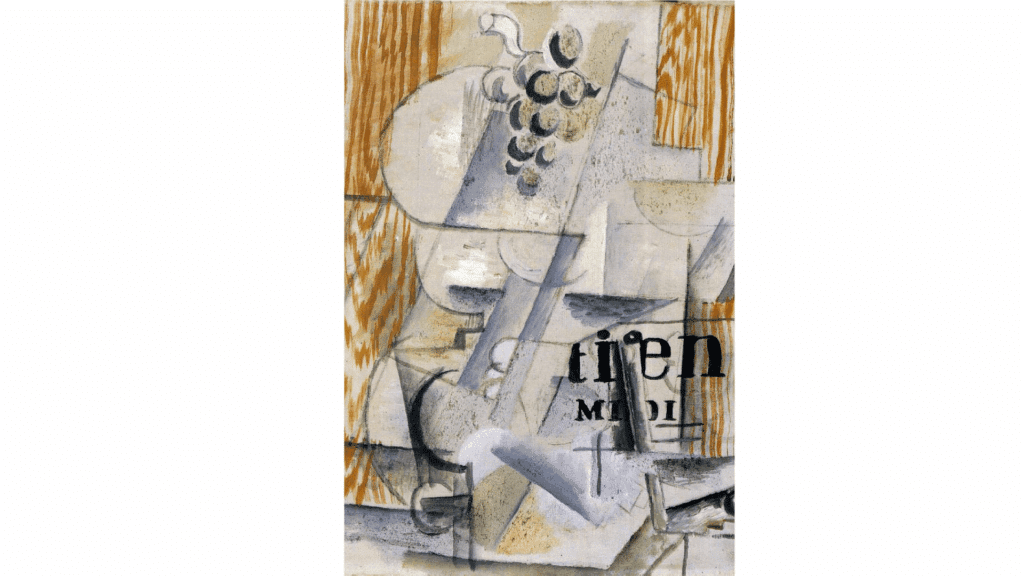
Source: Artchive
Braque created this innovative work by pasting real pieces of newspaper, wallpaper, and other materials onto the canvas alongside painted elements.
This papier collé technique allowed him to rebuild objects using actual textures and materials, marking Synthetic Cubism’s shift toward construction rather than deconstruction of reality.
17. The Violin (1913): Juan Gris
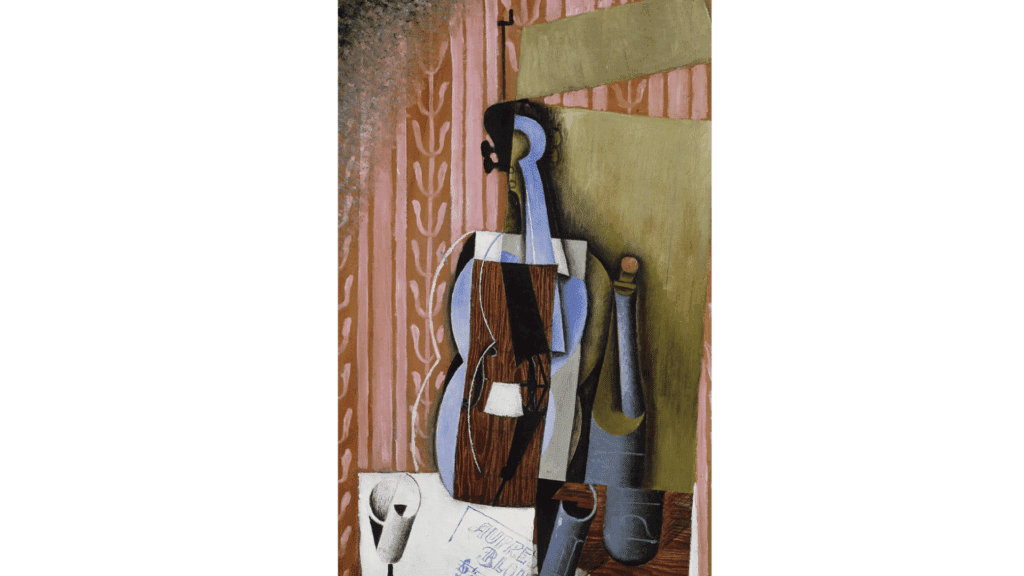
Source: WikimediaCommoms
Gris painted this violin with bright colors, geometric shapes, and collage elements like newspaper clippings. His mathematical approach produced clear, structured compositions.
The violin is recognizable despite being made from geometric fragments, highlighting Gris’s role in Synthetic Cubism.
18. Portrait of Pablo Picasso (1912): Juan Gris
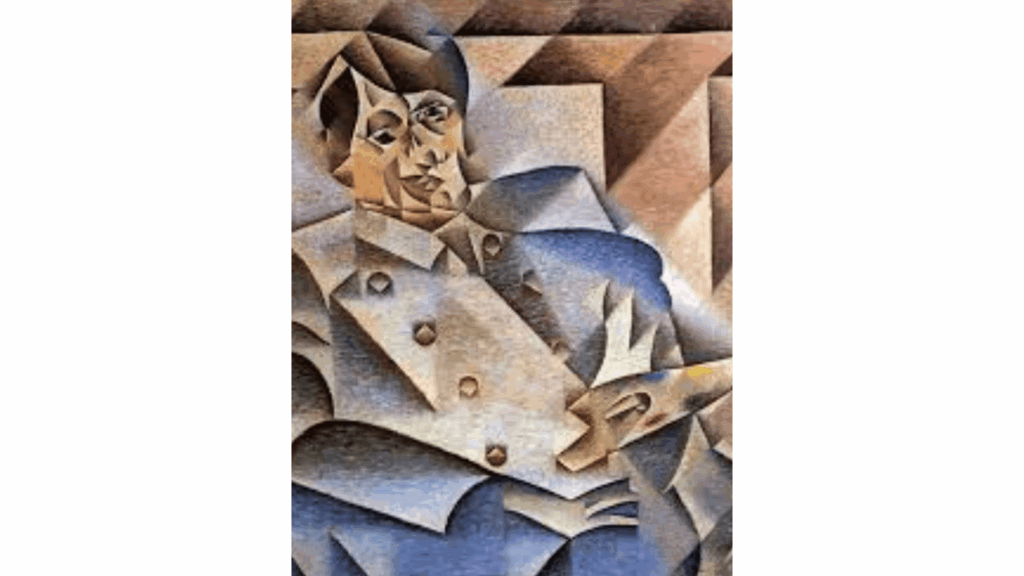
Source: WikiArt
This portrait shows Picasso constructed from geometric shapes, newspaper clippings, and painted elements. Gris used collage techniques to create a likeness that’s both abstract and recognizable.
The work demonstrates how Synthetic Cubists could create portraits using mixed media while maintaining the subject’s essential characteristics and personality.
19. Three Women (1921): Fernand Léger
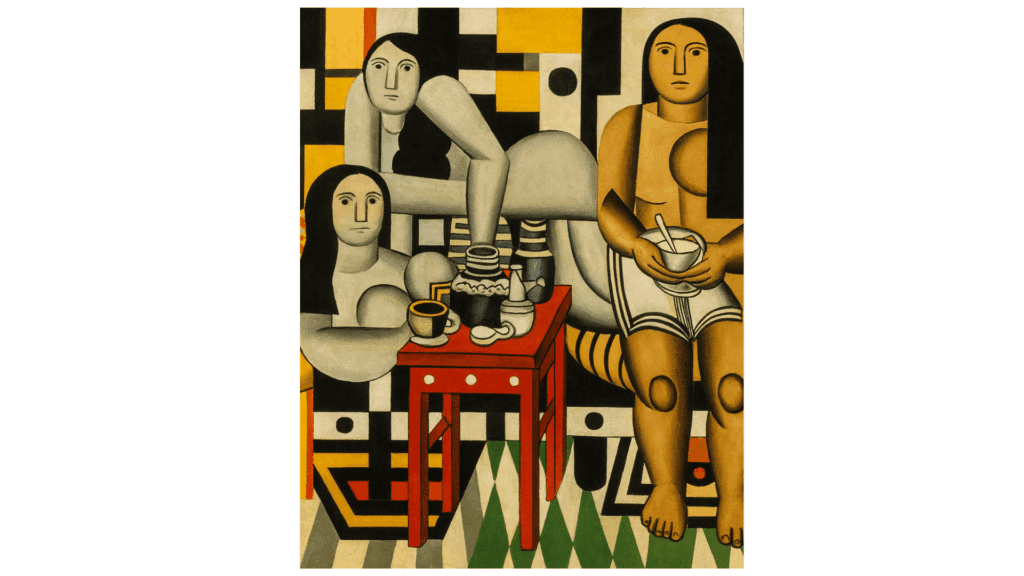
Source: Artchive
Léger depicted mechanical women with bold colors and cylindrical forms like machine parts.
His “tubular” Cubism shows industrial influence, with figures resembling robots or mannequins, reflecting modern society’s link with technology.
20. The City (1919) :Fernand Léger
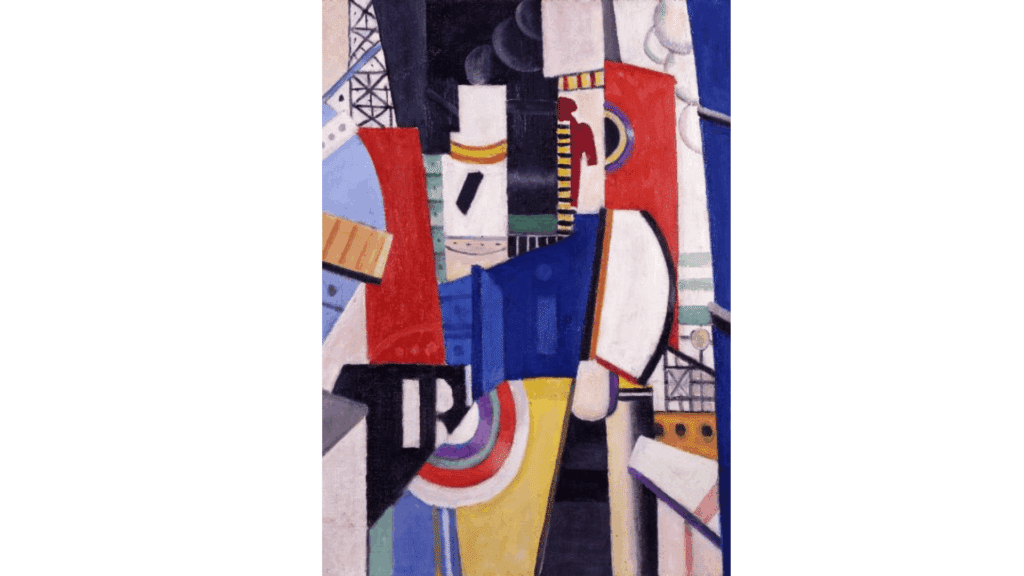
Source: ToledoMuseumofArt
This painting depicts modern urban life with geometric shapes, bright colors, and mechanical forms.
Léger shows buildings, signs, and people as interconnected geometric elements. It illustrates how Synthetic Cubism evolved to capture the energy and complexity of city life and industrial civilization.
21. Three Musicians (1921) : Pablo Picasso

Source: Artchive
Picasso’s painting depicts three musicians in costumes, created with flat, geometric shapes in vibrant colors resembling cut paper.
Each figure is composed of overlapping geometric shapes in red, blue, and brown. This piece exemplifies Synthetic Cubism’s style of reconstructing subjects with simplified, colorful geometries.
Synthetic Cubism shifted from breaking forms apart to rebuilding them with bold colors, geometric shapes, and mixed materials, paving the way for future art movements.
How These Famous Cubism Paintings Changed Art Forever?
Cubism didn’t just change painting; it completely changed how people think about art. This revolutionary movement broke down old rules and inspired artists worldwide to experiment with new ideas and styles.
Cubism inspired movements like Abstract Expressionism and Futurism, influencing artists like Pollock and architects like Frank Gehry with its bold, fragmented geometric forms.
Cubism influenced design, fashion, and music, as seen in geometric logos, angular prints, and Stravinsky’s bold break from tradition.
Today, Cubism’s influence is evident everywhere, from smartphone apps to skyscraper designs, demonstrating that art can indeed have a profound impact on the world.
Museums Housing Famous Cubist Paintings
Many world-famous museums boast incredible collections of Cubist masterpieces, displayed in galleries that attract millions to experience this revolutionary art movement.
- Museum of Modern Art (MoMA), New York: Home to Picasso’s “Les Demoiselles d’Avignon” and other groundbreaking Cubist works that started the movement
- Musée Picasso, Paris: Features the world’s largest collection of Pablo Picasso’s paintings, including his early Cubist experiments and masterpieces
- Tate Modern, London: Displays works by Braque, Picasso, and Juan Gris in its modern art galleries with interactive exhibits
- Art Institute of Chicago: Houses important Cubist paintings alongside detailed explanations of the movement’s history and techniques
- Centre Pompidou, Paris: Contains extensive Cubist collections with both Analytic and Synthetic period examples from multiple artists
Visiting these museums allows you to see Cubist paintings up close, with their geometric shapes and fragmented forms. These masterpieces continue to inspire new generations of artists and art lovers worldwide.
Final Brushstroke
Think about everything you’ve learned about famous Cubist paintings today. Pretty intriguing how Picasso, Braque, and their friends completely flipped the art world upside down, right?
Cubism invites you to see the world from every angle, embracing fragments, shapes, and imagination to create something entirely new.
Cubism isn’t just a relic of history stuck in museums. Its influence surrounds you every day in logos, building designs, video games, and smartphone apps.
Ready to find more amazing art movements? Start your next artistic venture and find out how creativity can change the world!

